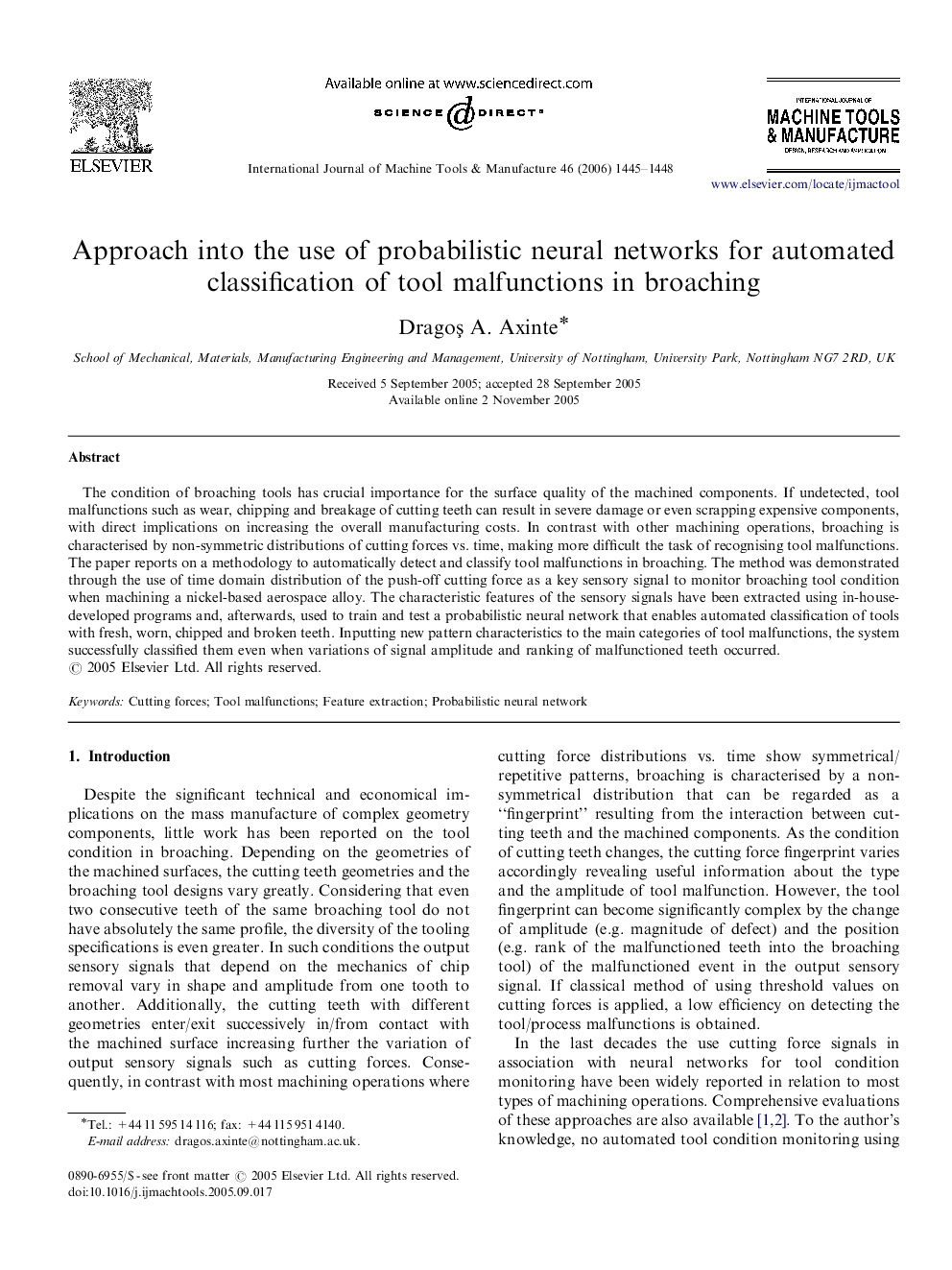| Article ID | Journal | Published Year | Pages | File Type |
|---|---|---|---|---|
| 784732 | International Journal of Machine Tools and Manufacture | 2006 | 4 Pages |
The condition of broaching tools has crucial importance for the surface quality of the machined components. If undetected, tool malfunctions such as wear, chipping and breakage of cutting teeth can result in severe damage or even scrapping expensive components, with direct implications on increasing the overall manufacturing costs. In contrast with other machining operations, broaching is characterised by non-symmetric distributions of cutting forces vs. time, making more difficult the task of recognising tool malfunctions. The paper reports on a methodology to automatically detect and classify tool malfunctions in broaching. The method was demonstrated through the use of time domain distribution of the push-off cutting force as a key sensory signal to monitor broaching tool condition when machining a nickel-based aerospace alloy. The characteristic features of the sensory signals have been extracted using in-house-developed programs and, afterwards, used to train and test a probabilistic neural network that enables automated classification of tools with fresh, worn, chipped and broken teeth. Inputting new pattern characteristics to the main categories of tool malfunctions, the system successfully classified them even when variations of signal amplitude and ranking of malfunctioned teeth occurred.
